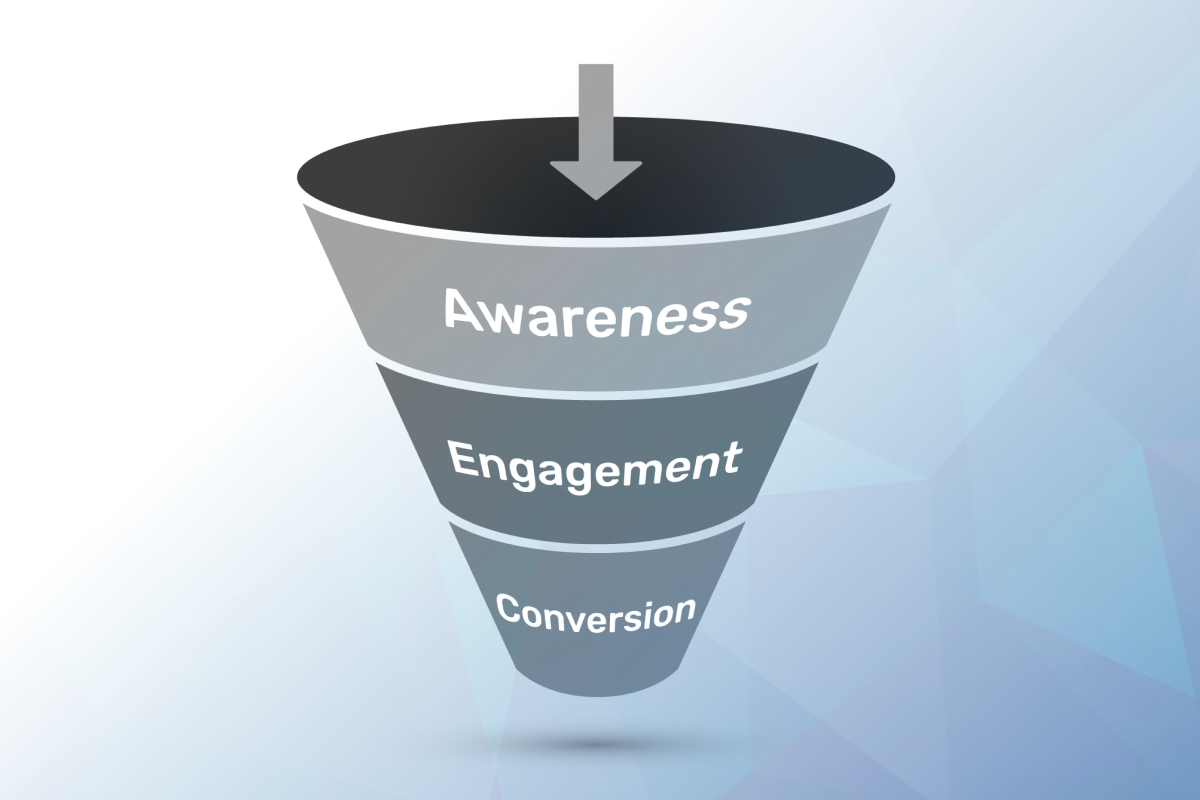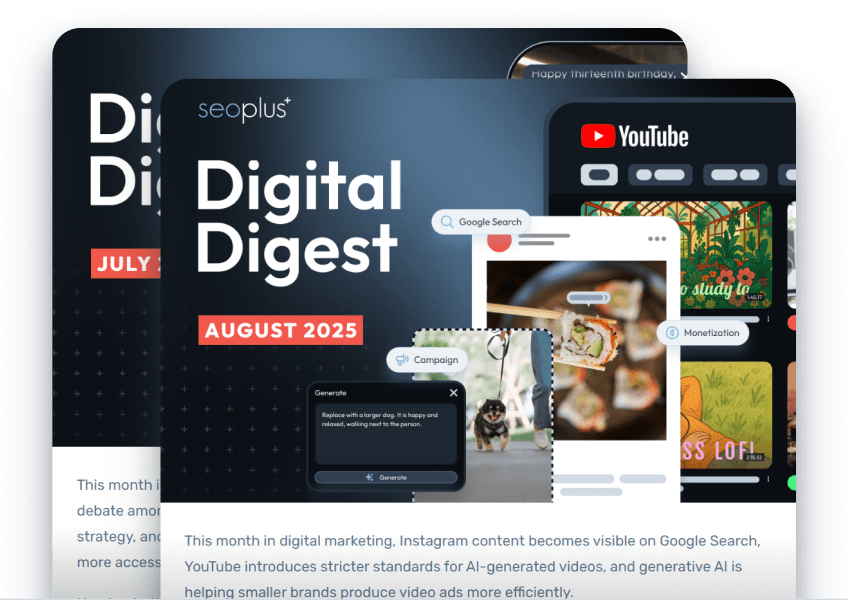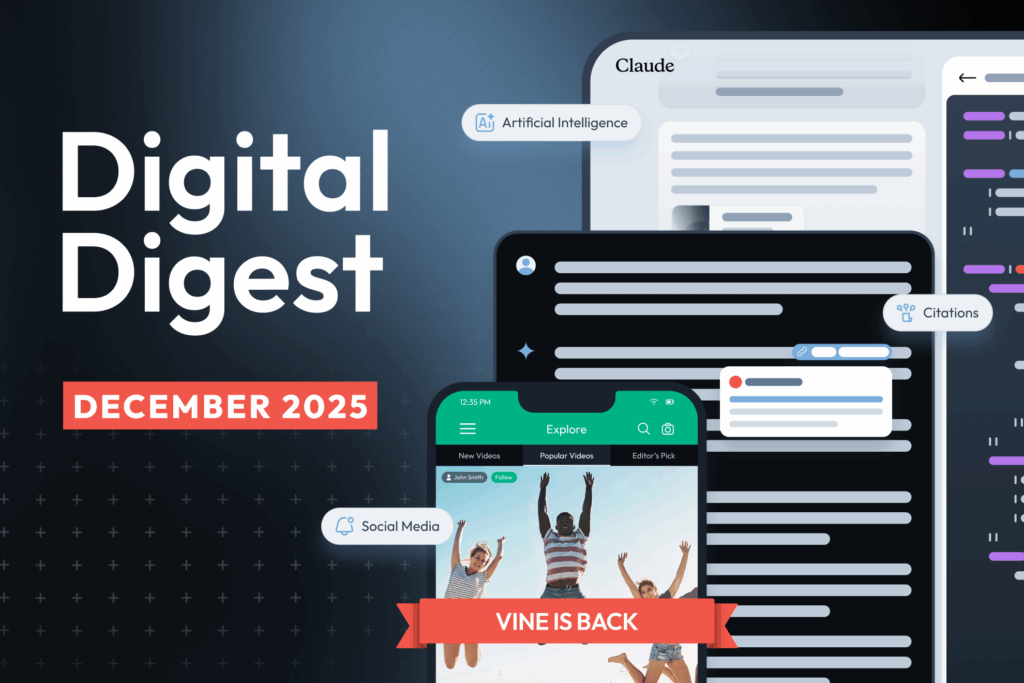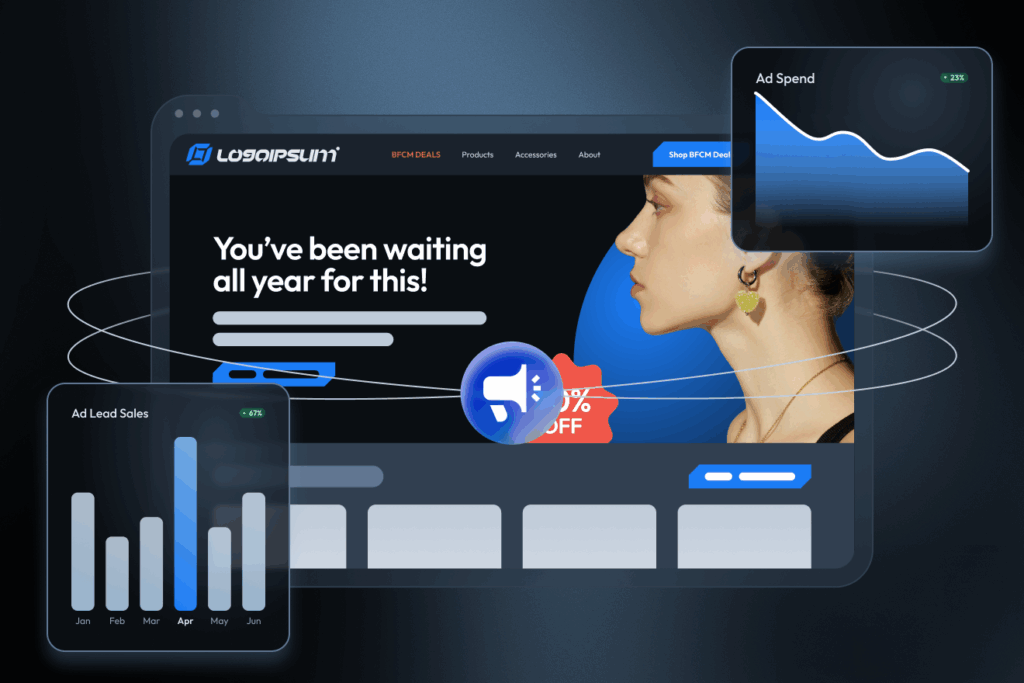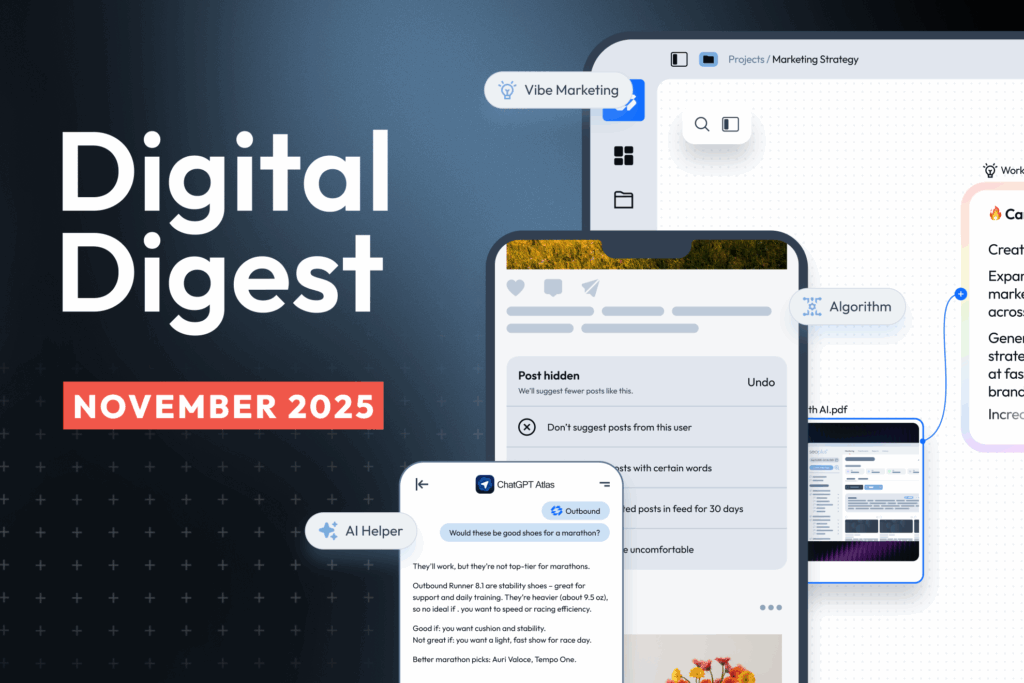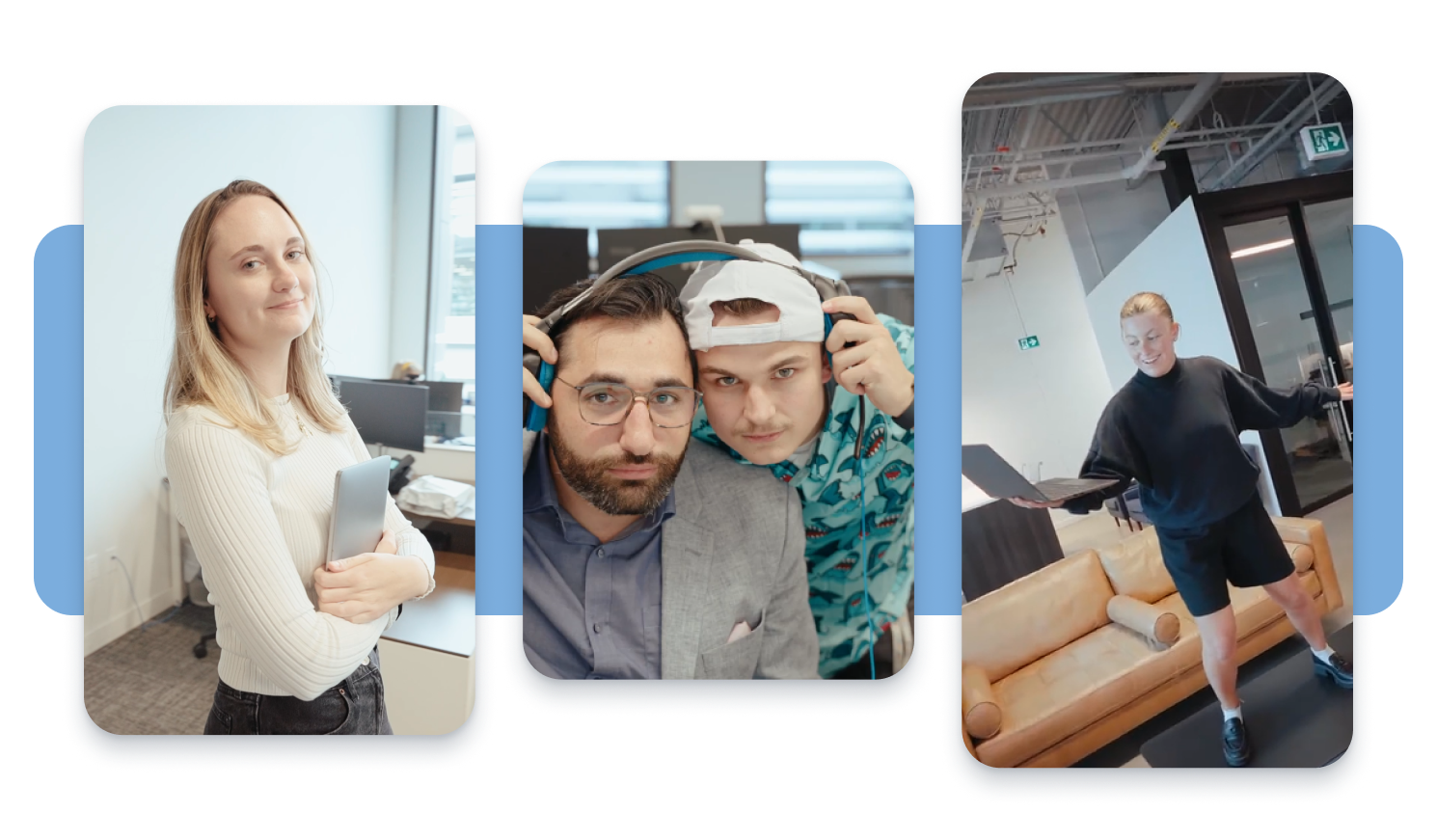Marketing funnels exist everywhere consumers go these days. From the initial stages when someone learns about a business to the purchasing stage, marketing funnels exist to convert prospects into customers and beyond. These funnels exist in the everyday places that we as consumers go to— whether it’s our Instagram feeds, the local mall, public transportation we take, YouTube videos we watch, billboards we drive by, and so much more.
Here’s a little experiment you can try for yourself: whenever you discover a new product that interests you, whether it’s from a YouTube video ad or a poster on a wall, complete the action that the advertisement is asking of you (e.g. visit the website, browse a product, watch a video, etc.). After you’ve done that, pay close attention to what happens next. Did you notice a different ad from the same brand on your Facebook news feed the next day? Was there a limited-time discount when you opened Instagram stories the week after? How about your email inbox? If you answered yes, then you can be sure that you’ve been entered into a marketing funnel!
So how do you build a successful marketing funnel for your own brand? In a quick ten-minute read, you’ll receive all of the info needed to help you get started. Whether it’s for a clothing brand you’ve launched or a revolutionary smartphone you’ve built, we’ll cover the principles of a successful marketing funnel and provide you with real examples. By the end
What’s a marketing funnel?
Before we get to the how, we must first understand a few basic principles about a marketing funnel. It’s a tool that helps you visualize the buyer journey, or the path a prospect takes as they become familiar with your company, from introduction to conversion (and hopefully beyond). For the most part, all buyer journeys contain the following six stages:There are big differences between each stage of the buyer journey so let’s take a closer look at each one.
Awareness
In the awareness stage, your prospect is learning about your brand for the first time ever. During this stage you as the marketer should focus on highlighting your product/brand and tracking how engaged users are with your ad. Key metrics you should focus on are:
- Reach
- Engagement
- Completion rate of what you are asking for (e.g. if you are directing people to visit your website, track how many people actually visited your website from the ad)
Primary goal: To show the value of your product or service, provide educational content and build awareness with your prospect.
Do: Educate and get in front of your target customer.]
Don’t: Sell or give too many specific details of your products/services. Do not offer a sales promotion.
Example of a great awareness ad: Watch on YouTube
The great thing about this ad is that it combines humour with content that’s going to engage their target customer: Canadians looking to buy a domain. Rather than using the message “buy a domain from us” like every other domain hosting company, they took the route of telling Canadians to choose .ca domains, not .com. The goal of this ad was to raise awareness for .ca domains and drive traffic to their website choose.ca.
With video ads specifically, you can track not only how many people clicked through to the website (at which point they have entered the next stage of your marketing funnel), but also those who viewed the video at 50%, 75%, 90%, and 100%. Those who viewed less than 50% of the video (15 seconds) are not interested in your product/brand and your message. So why continue wasting ad budget on those people? Instead, you should focus your ad budget on remarketing to those who have engaged with the video at more than 50% since these people were interested enough to watch a good chunk of your ad.
Interest
Once your target customers have become aware of your brand, the next step in the funnel is to generate interest. Interest can be measured by how long a new website visitor stays on your website. Someone who is disinterested in what you have to offer will most likely leave your website within their first 5 or 10 seconds on site. On the other hand, those who are most interested in what you are offering are going to spend a significantly longer period of time reading and engaging with your website content. Key metrics to track are:
- Average session duration
- Bounce rate
- How many pages a person views on average
If the user doesn’t visit your website, interest can still be measured based on the engagement they had with your ad, such as commenting, liking, and viewing the full duration of the ad and not skipping (video).
Primary goal: To build a deeper relationship with your website visitor, introduce them to your product/service and nurture them with contextual or targeted content.
Do: Provide educational content tailored to your visitor, deliver content that is product specific, be helpful. Continue to drive interest.
Don’t: Be too salesy.
On the choose.ca website, there’s tons of engaging content and pages that interested visitors would consume.
Consideration
After absorbing the content on your website and ads, your ideal customers are ready to give you their consideration. During this part of the funnel, your target market will complete some actions (e.g. request a quote, look at reviews, add to cart, etc.), signalling that they’re considering purchasing your product/service. Key metrics to track here are goal completions on your website such as:
- Clicking on calls-to-action
- Completing contact forms
- Adding to their shopping cart
Instead of attempting to get the customer to complete the final conversion action you desire, such as purchasing your product, your goal should be to get the customer to complete mini conversions or preliminary conversions leading to their purchase.
Primary goal: To convince your website visitor to complete some small actions on your site.
Do: Talk about the benefits of your product/service, show off your product/service, offer incentives to convince visitors to engage further with your website and band. Create engaging content.
Don’t: Overwhelm visitors with sales assets and sales calls.
On choose.ca the first action the website asks of their visitors is to enter a domain to see if it’s available. Disinterested visitors are not going to enter a domain; however, those who are considering buying a domain will enter one to see if it’s available.
If a domain is submitted and the user doesn’t proceed to buy that domain from the list above, then that is a signal to you that this person has given consideration and needs more convincing to complete the next step. Specific calls-to-action in ads are more apparent to those who previously gave consideration: If the visitor entered a domain and did not make a purchase, then the call to action “Book Now” on this remarketing Instagram ad will resonate with him/her. This ad reminds visitors to continue where they last left off. It could’ve further engaged with the user by reminding them that their domain name can be taken by someone else the longer they wait. Urgency helps drive action here.
Intent
While consumers become aware of your brand and show interest and consideration, they may have other factors in their life that are more important and urgent. When a potential customer gives you their consideration, they are also giving consideration to other products and brands that are interacting with them. During the intent stage of the buyer journey, you as the marketer need to highlight the impact of your product.
Primary goal: To convince your target customer why they must act fast.
Do: Highlight your target customer’s problem that can be solved by your product. Take the values of your product/service and convert them to benefits. Create a sense of urgency to compel visitors to purchase soon.
Don’t: Overwhelm visitors with sales assets and sales calls.
As mentioned, buying a domain can be quite competitive. If you’re too slow, then chances are someone else will register your domain before you do. During the intent stage of the funnel you want to create urgency and remind the visitor that they must act fast. At any time your target customers will be dealing with a variety of problems in their lives (e.g. needing to buy a new alarm clock because their other one broke down). Some problems are more urgent than others, but it is your job as a marketer to make the problem you are solving with your product appear more urgent than others, which will drive action.
Choose.ca currently does not have an ad for this stage of the funnel.
Exercise: Can you tailor a message to drive intent in their funnel? Would this be shown on Facebook? Instagram? YouTube? Twitter? How frequently will the ad show?
Evaluation
At the evaluation stage the ideal customer has already identified a need that they want to address and have considered your solution as an option. They have shown intent that this is something they want to resolve sooner than later. But is your solution the best fit for their needs? During this stage consumers are evaluating and comparing your product to your competitors’ products. They’re conducting more research than before. The main factors that consumers use to choose one brand over another include:
- Price
- Value
- Support
Is your product a more affordable alternative? Does your product offer more value that competitors aren’t offering? Does your business provide better support before and after the sale?
According to a study conducted by emarketer.com, most consumers look at the reviews before making a purchase. Does your product have good reviews already? If you don’t have any reviews, consider incentivizing your customers to leave one!
Primary goal: To convince your target customer that you are the best solution for their needs.
Do: Talk about the benefits of your product/service, show off your product/service, provide customer testimonials, use case studies to exemplify your product in real use-cases, and provide reasons to choose you.
Don’t: Overwhelm the visitor with sales assets and sales calls.
Choose.ca uses customer testimonials as well as value props to highlight why they are a premier solution. Their branding resonates well with Canadians and draws on the patriotism of Canadian business owners.
Running an Instagram ad highlighting customer reviews or reasons for choosing a .ca domain are solid ways to remind those who are in the evaluation stage to a .ca domain from choose.ca.
Purchase
After careful research your ideal customer is ready to make their purchase. Website visitors who value your product and like everything about your brand, but just can’t afford to pay at your normal price, will respond better to a sales promotion than those who evaluated you poorly.
Consider up-selling and cross-selling related products to your most ideal customers who love everything about you. Amazon.ca does a great job of utilizing this tactic.
The new marketing funnel
Your relationship with your customer shouldn’t end at the bottom of the cone-shaped marketing funnel when they make their first purchase. Instead, you should open up the funnel after a person purchases and focus on customer retention. What is the journey like after a person buys from you?
By opening up the original marketing funnel into the new model, you can build deeper connections with your customers to drive repeat transactions and generate even more customers through existing ones. Consider two additional stages you can add to your marketing funnel:
- Loyalty
- Advocacy
Loyalty
There’s a huge upside to emphasizing customer retention in your marketing funnel: more money in your pocket. Why not give discounts to your loyal customers to encourage them to purchase more from you? If you have customers that absolutely love your brand and are happy with their first purchase, they are more than likely to buy from you again.
Primary goal: To retain your customers and instill loyalty by delighting customers with helpful content and awesome service.
Do: Give helpful information, send educational content relevant to your customers. Cross-sell and up-sell. Highlight new promotions.
Don’t: Stop interacting with your customers or adding value.
When a customer buys from you, continue to nurture that customer instead of dropping communication. Remind them to leave a review in order to get a discount on their next purchase. Encourage them to take more action such as reading a recent blog post or participating in a giveaway contest.
Advocacy
Advocacy happens when your customers become fans of your brand. Not only are they loyal and continue to buy from you, they also constantly tell their friends about you and brag about you on social media. According to invesp, word-of-mouth marketing results in 5x more sales than paid media and people are 90% more likely to trust and buy from a brand recommended by a friend.
Primary goal: To turn your customers into fans who talk about your company and refer you to their friends.
Do: Connect with your loyal customers, keep delighting your customers with awesome content and service, collect feedback.
Don’t: Forget about your customers.
Have you made a purchase because it was recommended by a friend? Getting customers to advocate for you has become that much easier with social media. Linking your social media accounts to the checkout pages on your website will direct loyal customers into following you on Instagram, Facebook, and Twitter whereby they have the ability to share your posts with their friends.
Uber and Lyft use referral codes as a means to drive advocacy and it works tremendously. Customers of these ride-sharing apps were given referral codes so that they can recommend a ride to a friend in order for both parties to receive a discount.
So if a friend uses a unique referral code for their first ride on either Uber or Lyft, they will have great savings and at the same time, the referrer also receives a discount. This marketing strategy is a win-win scenario in many peoples’ eyes. The number of new users on these apps grew dramatically compared to other marketing alternatives as a result.
Consider incentivising your loyal fans to brag about you if they don’t already!
Build your own marketing funnel
If you’ve made it this far then you should have all of the info needed to create your own successful marketing funnel. Here’s a quick how-to manual on getting started:
- Identify your target customers by building customer personas. Truly understand their demographics, consumption behaviours, needs and wants, and challenges in their lives.
- Understand and identify your business’ sales cycle. Is it 5 days? 30? 60?
- Build out strategies for each stage in your marketing funnel or buyer journey. What platforms will you use? Can you expect to reach your target market in those media? How often will you reach them there?
- Craft ads and content to attract and nurture your target customers. Have materials ready for each stage and explore new opportunities to engage with your target customer.
- Research what competitors are doing currently and examine ways you can improve upon their strategies. Are there pain points that these competitors aren’t addressing? Do you have a unique value proposition that sets you apart from the competition?
- Go back to your marketing funnel and adjust your strategy if needed based on your research.
- Launch your funnel and associated marketing campaigns. Incorporate all the different mediums at your disposal (email, social media, search engine marketing, word of mouth, etc.)
- Measure success at each stage of the funnel and use analytics to justify any pivots or adjustments to your plan. Set goals for each stage and evaluate if you are meeting your desired targets.
- Test new strategies if you are not meeting your desired targets. It can be as simple as adjusting your ad copy or offering free content such as a whitepaper or ebook about your product.
- Continue to nurture your loyal customers so that they advocate for you!
Mapping out a buyer journey can be difficult and will take time. You won’t get it exactly right on the first attempt—and that’s fine! The sooner you test out your marketing funnel, the sooner you will realize what works for your business model and what doesn’t. If you’re unsure how to get started or need an evaluation of your marketing funnel, reach out. We can help.
